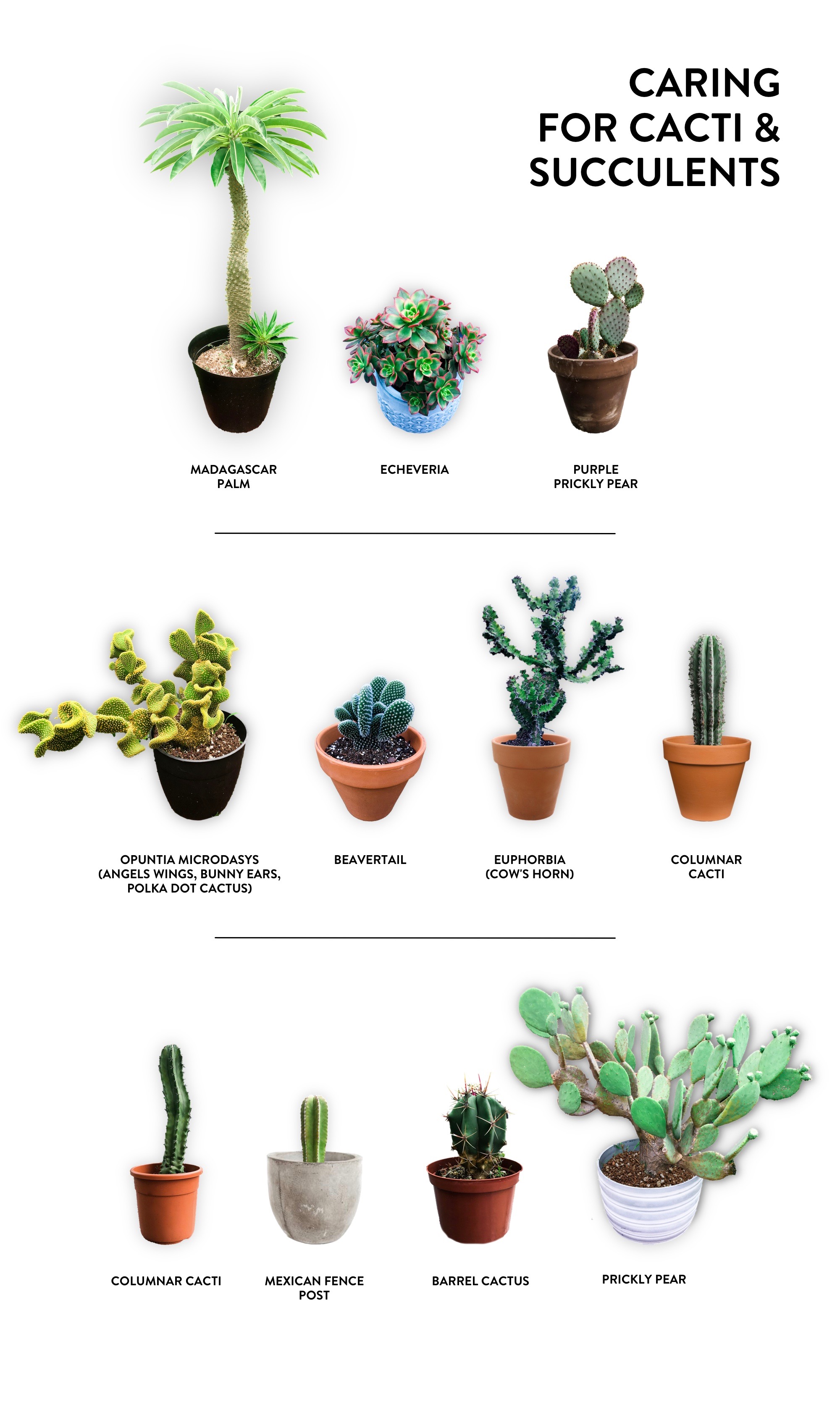CARING FOR CACTI & SUCCULENTS
I have a friend who is just one of those people that's great with plants. He loves them and whenever I'm around him he's talking about his plants and visiting nurseries. I recently asked him to share some thoughts on how he cares for cacti and succulents and he was kind enough to write a blog for me to share! I hope it's as helpful for you as it was for me! Enjoy!
CARING FOR CACTI AND SUCCULENTS
Owning plants is a great way to bring the beauty and uniqueness of the outdoors to our homes, whether inside or out. Some of the most unique plants of all (and my personal favorite) are cacti. Though I live in Louisville, KY, I have found success growing them for years now, and since they have become all the rage these days, I wanted to share a few helpful tips on growing these southwestern delights. Finally, given that succulents are closely related to the cactus family, I will include a brief word on caring for them as well.
SUNLIGHT
First, and most simply, sunlight. Any plant needs some measure of sunlight, but this is especially the case with cacti. Cacti are typically native to desert regions, so sunlight is critical for their health and growth. If you want to keep your cactus plants indoors, be sure to place them near a window, preferably one that gets good morning sun. If keeping them outdoors, morning sun is again the best, as it tends to be less scorching than afternoon sun. In any case, try to get them at least 4 solid hours in the sun every day.
One caveat here: if you live in a particularly hot climate, the scorching afternoon sun can actually sunburn your cactus. This will typically create patchy areas of extreme discoloration. If it happens, don’t worry, your plant is still alive and well. It will just have some blemishes from this point forward. To avoid sunburn, try to get your cacti in the shade during these hottest parts of the day.
WATER
Second, water. Again, your plant hails from the desert! It does not need a lot of water. In fact, overwatering your cactus is a sure-fire way to kill it. The best way to gauge when your plant needs water is to test the soil. After each good drink (completely soak the soil until water runs out from the base of the pot), let the soil dry out completely before watering again. I have found that typically during the summer months this amounts to a good watering every two weeks. In the winter months, you can safely cut back to once a month.
Of course, if your plant lives outdoors, and far away from its desert homeland, you will also need to gauge rain. Given that it rains much more often in Louisville than Southern California, sometimes the rain here provides all the water my plants need. In fact, at times I even need to bring them inside so they don’t drown!
As I said, overwatering your plant can be its death toll. An overwatered cactus will develop root rot – an initially unseen cancer that will spread from the “inside out.” When root rot finally manifests itself, you will notice a softening on the flesh of your cactus that begins around its base. This is a decay that will spread upward until the plant meets its end. If you notice root rot, there are ways to save your plant, but it is tough – and its chances are slim. So be careful not to overwater! If all else fails, remember that cacti are extremely hardy. Better to err on underwatering than overwatering.
TRANSPLANTING
Third, transplanting. Typically, when you bring your cactus home from the store, it’s ready for a new pot. You will notice the soil extremely hardened, and the roots bound to the diameter of the pot. However, after this initial repotting, it’s helpful to remember that cacti can grow to sizes and heights extremely disproportionate to the pots in which they live.
That said, I realize that giving the cactus a trendy new home can add style and accent to your own. So whenever you’d like, feel free to transplant. Just remember this: your pot needs drainage! A good-sized hole in the middle of the base is a bare minimum. Personally, I prefer three to four holes in the base. Before pouring the soil into the pot, you can place small stones around these holes. This will prevent the soil from clogging the holes and inhibiting drainage. Remember, no drainage equals too much water. Too much water equals root rot. Root rot equals death!
Not only does your pot need to have good drainage, your soil does too. Avoid the classic potting soil you would use for any other household plant. You can simply find cactus potting soil at your local hardware store, and this will do the trick. However, in my research, I have found it best to create my own cactus potting soil that mimics the desert grounds. To do this, in addition to the cactus potting soil, you will want to get a bag of sand and either vermiculite or perlite. I combine approximately 15% sand, 15% vermiculite/perlite, and 70% cactus potting soil (just eyeball this). Mix this together well before setting your plant in its new home. This will provide the fast and easy water drainage your cactus needs for a stable life.
SUCCULENTS
Given that succulents are closely related to the cactus family, let me offer a brief word on them too. While care for succulents is essentially the same, I have found that they are much less hardy. Their exposure to sufficient sunlight is probably more critical. They are more sensitive to under watering too. Let the soil dry out like their cactus friends, but once you see it dry, be sure to water quickly. And when repotting, I would nix the sand and vermiculite in favor of only using the cactus potting soil.[1]
Ultimately, your new cactus friend will be very forgiving if you just remember sufficient sunlight, not too much water, and good drainage. Following these simple steps should produce a healthy plant that spices up your home for years to come.
[1]Much of my knowledge on succulents here comes from the helpful resources found at https://www.succulentsandsunshine.com/guide-growing-succulents-indoor-house-plants/
What are some of your favorite tricks for taking care of your cacti and succulents?
| Credits: Author and Photography - Dan Maketansky; Graphic Design - Calvin Payne |

